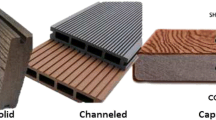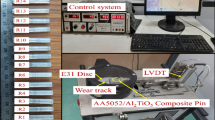Abstract
In the present research article, a hyperbranched alkyd resin was synthesized by using bio-based material (castor oil based fatty amide) and pyromellitic dianhydride. The synthesized hyperbranched alkyd resin was characterized by nuclear magnetic resonance (NMR) and Fourier transform infrared (FTIR) spectroscopy. The polyurethanes (PMFAI and PMFAM) were prepared from hyperbranched alkyd resin and diisocyanates [isophorone diisocyanates (IPDI) and methylene diphenyl diisocyanate (MDI)] maintaining the OH:NCO ratio of 1:1.2. These polyurethanes were used in coating applications on mild steel and wood panels. The performance of cured polyurethane coatings was studied in terms of crosscut adhesion, impact resistance, gloss, scratch hardness, and chemical resistance. The chemical resistance test was performed by immersion method in 2 N HCl, 2 N NaOH, 3.5% NaCl solution, xylene, and water. The corrosion rate and anticorrosion efficiency of the coating panels were determined by a potentiostat. From a study of coating properties, it was found that the PMFAI and PMFAM exhibited better coating properties as compared to reported linear alkyd polyurethanes. The stain test of coatings was performed on wood panels. The thermal behavior of the coatings was determined by thermogravimetric analyzer. The surface morphology of coating films was examined by scanning electron microscopy and atomic force microscopy. It was found that the coating properties of hyperbranched alkyd resin were excellent as compared to linear alkyd resin polyurethanes.









Similar content being viewed by others
References
Nanvaee, AA, Yahya, R, Gan SN, “Alkyd Resins Are Major Important Binders in Organic Coatings.” Malaysia Polymer International Conference, Kuala Lumpur, Malaysia, pp. 65–69, 2009
Atimuttigul, V, Damrongsakkul, S, Tanthapanichakoon, W, “Effects of Oil Type on the Properties of Short Oil Alkyd Coating Materials.” Korean J. Chem. Eng., 23 (4) 672–677 (2006)
Gandini, A, Lacerda, TM, Carvalho, AJF, Trovatti, E, “Progress of Polymers from Renewable Resources: Furans, Vegetable Oils, and Polysaccharides.” Chem. Rev., 116 (3) 1637–1669 (2016)
Mehta, PN, “Hyperbranched Polymers: Unique Design Tool for Coatings.” Surf. Coat. Int. Part B Coat. Trans., 89 (4) 333–342 (2006)
Gurunathan, T, Mohanty, S, Nayak, SK, “Good Wetting, Mechanical Properties and Durability.” Polym. Plast. Technol. Eng., 55 (1) 92–117 (2016)
Voit, B, “Hyperbranched Polymers—All Problems Solved After 15 Years of Research?” J. Polym. Sci. Part A Polym. Chem., 43 (13) 2679–2699 (2005)
Kim, YH, “Hyperbranched Polymers 10 Years After.” J. Polym. Sci. Part A Polym. Chem., 36 (11) 1685–1698 (1998)
Van Benthem, RATM, “Novel Hyperbranched Resins for Coating Applications.” Prog. Org. Coat., 40 (1–4) 203–214 (2000)
Patil, AM, “Synthesis and Characterization of Bio-Based Polyester and Polyamide from Citric Acid and Mannitol.” Orient. J. Chem., 34 (1) 538–543 (2018)
Patil, AM, “Synthesis and Anticorrosion Study of Bio-Based Polyurethane Coatings.” Bull. Pure Appl. Sci. Chem., 38c (1) 33–39 (2019)
Patil, AM, Jirimali, HD, Jagtap, RN, “Study of Coating Performance of Bio-Based Hyperbranched Polyester Polyol/Graphene Oxide Composites in PU-Coating.” J. Macromol. Sci. Part A (2020). https://doi.org/10.1080/10601325.2020.1826330
Patil, AM, Gite, VV, Jirimali, HD, Jagtap, RN, “Fully Biobased Nanocomposites of Hyperbranched-Polyol and Hydroxyapatite in Coating Applications.” J. Polym. Environ. (2020). https://doi.org/10.1007/s10924-020-01903-8
Lligadas, G, Ronda, JC, Galià, M, Cádiz, V, “Renewable Polymeric Materials from Vegetable Oils: A Perspective.” Mater. Today, 16 (9) 337–343 (2013)
Patil, AM, Jirimali, HD, Gite, VV, Jagtap, RN, “Synthesis and Performance of Bio-Based Hyperbranched Polyol in Polyurethane Coatings.” Prog. Org. Coat., 149 (July) 105895 (2020)
Patil, AM, “Synthesis, Characterizations and Application of Bisphenol-A Based Highly Branched Polyol in Polyurethanes Coatings.” Asian J. Res. Chem., 11 (3) 593 (2018)
Qin, X, et al., “Controllable Synthesis and Characterization of Soybean-Oil-Based Hyperbranched Polymers Via One-Pot Method.” ACS Sustain. Chem. Eng., 6 (10) 12865–12871 (2018)
Patil, CK, et al., “Synthesis of Bio-Based Polyurethane Coatings from Vegetable Oil and Dicarboxylic Acids.” Prog. Org. Coat., 106 87–95 (2017)
Mańczyk, K, Szewczyk, P, “Highly Branched High Solids Alkyd Resins.” Prog. Org. Coat., 44 (2) 99–109 (2002)
Hofland, A, “Alkyd Resins: From Down and Out to Alive and Kicking.” Prog. Org. Coat., 73 (4) 274–282 (2012)
Chaudhari, A, Kulkarni, R, Mahulikar, P, Sohn, D, Gite, V, “Development of PU Coatings from Neem Oil Based Alkyds Prepared by the Monoglyceride Route.” J. Am. Oil Chem. Soc.: JAOCS, 92 (5) 733–741 (2015)
Ikladious, NE, Mansour, SH, Asaad, JN, Emira, HS, Hilt, M, “Synthesis and Evaluation of New Hyperbranched Alkyds for Coatings.” Prog. Org. Coat., 89 252–259 (2015)
Zheng, Y, Li, S, Weng, Z, Gao, C, “Hyperbranched Polymers: Advances from Synthesis to Applications.” Chem. Soc. Rev., 44 (12) 4091–4130 (2015)
Konwar, U, Karak, N, “Mesua ferrea L. Seed Oil-Based Highly Branched Polyester Resins.” Polym. Plast. Technol. Eng., 48 (9) 970–975 (2009)
Selim, MS, Wang, FQ, Yang, H, Huang, Y, Kuga, S, “Hyperbranched Alkyd/Magnetite-Silica Nanocomposite as a Coating Material.” Mater. Des., 135 173–183 (2017)
Naik, RB, Jagtap, SB, Ratna, D, “Effect of Carbon Nanofillers on Anticorrosive and Physico-Mechanical Properties of Hyperbranched Urethane Alkyd Coatings.” Prog. Org. Coat., 87 28–35 (2015)
Naik, RB, Ratna, D, “Synthesis of Silver Nanoparticles Embedded Novel Hyperbranched Urethane Alkyd-Based Nanocomposite for High Solid Antimicrobial Coating Application.” J. Coat. Technol. Res., 12 (6) 1073–1083 (2015)
Naik, RB, Malvankar, NG, Mahato, TK, Ratna, D, Hastak, RS, “Novel Moisture-Cured Hyperbranched Urethane Alkyd Resin for Coating Application.” J. Coat. Technol. Res., 11 (4) 575–586 (2014)
Rahman, OU, Bhat, SI, Yu, H, Ahmad, S, “Hyperbranched Soya Alkyd Nanocomposite: A Sustainable Feedstock-Based Anticorrosive Nanocomposite Coating.” ACS Sustain. Chem. Eng., 5 (11) 9725–9734 (2017)
Ikladious, NE, Asaad, JN, Emira, HS, Mansour, SH, “Alkyd Resins Based on Hyperbranched Polyesters and PET Waste for Coating Applications.” Prog. Org. Coat., 102 (B) 217–224 (2017)
Ling, JS, Ahmed Mohammed, I, Ghazali, A, Khairuddean, M, “Novel Poly(Alkyd-Urethane)s from Vegetable Oils: Synthesis and Properties.” Ind. Crops Prod., 52 74–84 (2014)
Chaudhari, AB, Tatiya, PD, Hedaoo, RK, Kulkarni, RD, Gite, VV, “Polyurethane Prepared from Neem Oil Polyesteramides for Self-Healing Anticorrosive Coatings.” Ind. Eng. Chem. Res., 52 (30) 10189–10197 (2013)
ASTM Standaard D 1980, “Standard Test Method for Acid Value of Fatty Acids and Polymerized Fatty Acids,” August 1987, pp. 426–427, ASTM International, West Conshohocken, PA
ASTM Standard D 1957-86, “Standard Test Method for Hydroxyl Value of Fatty Oils and Acids.” 86 (Reapproved) 1–3 (2001), ASTM International, West Conshocken, PA
Products, RC, Applica, E, Tape, S, Paint, T, ASTM D 3359, “Standard Test Methods for Measuring Adhesion by Tape Test (Test Method B)," pp. 1–7, 2002, ASTM International, West Conshohocken, PA
ASTM Standard D 2794-93, "Standard Test Method for Resistance of Organic Coatings to the Effects of Rapid Deformation (Impact)," Reapproved, pp. 1–3, 1993, ASTM International, West Conshohocken, PA
Wei, S, Guo, Z, Wei, H, Ding, D, “Anticorrosive Conductive Polyurethane Multiwalled Carbon Nanotube Nanocomposites.” J. Mater. Chem. A, 1 10805–10813 (2013)
Petrovic, ZS, “Polyurethanes from Vegetable Oils.” Polym. Rev., 48 (1) 109–155 (2008)
Alam, M, Akram, D, Sharmin, E, Zafar, F, Ahmad, S, “Vegetable Oil Based Eco-Friendly Coating Materials: A Review Article.” Arab. J. Chem., 7 (4) 469–479 (2014)
Azam Ali, M, Ooi, TL, Salmiah, A, Ishiaku, US, Ishak, ZAM, “New Polyester Acrylate Resins from Palm Oil for Wood Coating Application.” J. Appl. Polym. Sci., 79 (12) 2156–2163 (2001)
Anand, A, Kulkarni, RD, Patil, CK, Gite, VV, “Utilization of Renewable Bio-Based Resources, Viz. Sorbitol, Diol, and Diacid, in the Preparation of Two Pack PU Anticorrosive Coatings.” RSC Adv., 6 (12) 9843–9850 (2016)
Author information
Authors and Affiliations
Corresponding authors
Additional information
Publisher's Note
Springer Nature remains neutral with regard to jurisdictional claims in published maps and institutional affiliations.
Rights and permissions
About this article
Cite this article
Patil, A.M., Jagtap, R.N. PU-coating performance of bio-based hyperbranched alkyd resin on mild steel and wood substrate. J Coat Technol Res 18, 741–752 (2021). https://doi.org/10.1007/s11998-020-00438-w
Received:
Revised:
Accepted:
Published:
Issue Date:
DOI: https://doi.org/10.1007/s11998-020-00438-w




